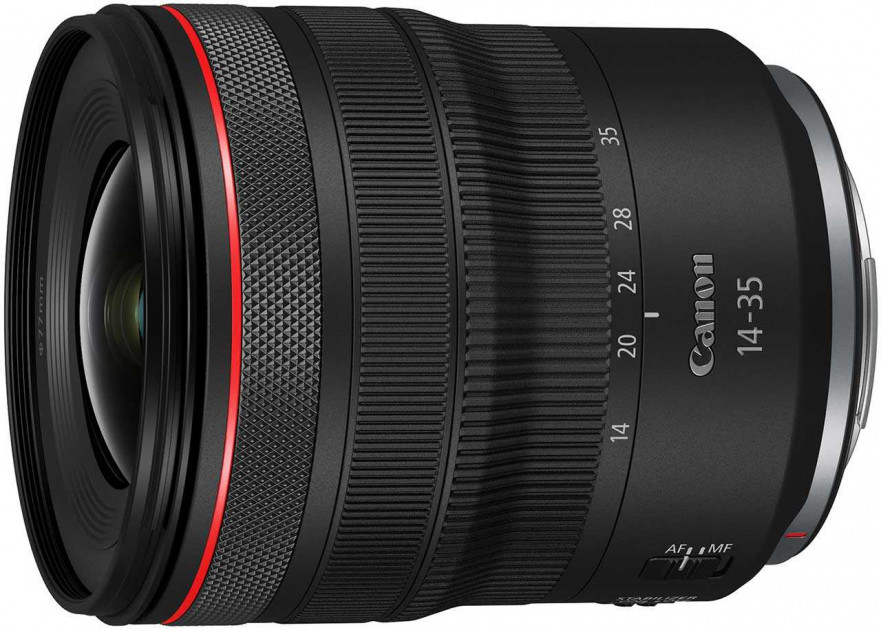Introduction
The Panasonic Lumix GH5 II is a new flagship mirrorless camera aimed squarely at both stills photographers and videographers.
Successor to the very popular GH5 camera, this new 2021 model now features C4K/4K 60p 4:2:0 10-bit unlimited video recording, wireless live streaming in FHD/60p, a new 20.3 megapixel sensor with AR (Anti-Reflective) coating, and the latest high-speed and high-performance Venus Engine.
Other key new improvements include even better Body I.S. (Image Stabiliser) now worth up to 6.5-stops slower shutter speed, a higher resolution 1.84M pixel, 3-inch LCD screen which has a wider colour gamut and brightness, a faster frame rate of 120fps for the EVF, support for USB-C charging, larger buffer for continuous shooting, Face/Eye/Head/Body and Animal Recognition autofocusing, bigger 2200 mAh battery, and the V-Log L profile is pre-installed.
Otherwise, the new Mark II GH5 is very similar to the original version from 2016. The splash- and dustproof GH5 II offers built-in Wi-Fi and Bluetooth connectivity, 0.05 second contrast-detect autofocus system with 225 focus points, 1/8000th top shutter speed, 1/250th second flash sync speed, 1,728-zone metering system, 3,680K-dot OLED electronic viewfinder, 3.2-inch swivelling and tilting LCD screen, touchscreen control system with touch-based functions like Touch AF/AE and Touch Shutter, 5-axis Dual Image Stabilisation system to help combat camera-shake, ISO range of 100-25600, completely silent electronic shutter, 12 (AFS) / 9 (AFC) fps burst shooting, Post Focus and Focus Stacking functions, and dual UHS-II SD Memory Card slots.
The Panasonic Lumix GH5 II is available now only in black, priced at £1499 / $1699 body only, £1699 with the standard 12-60mm f3.5-5.6 lens (M Kit), and £1999 / $2299 with the Leica 12-60mm f/2.8-4.0 lens (L Kit).
Ease of Use
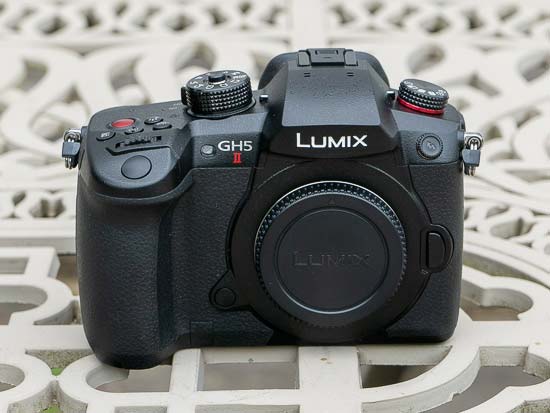 |
Measuring 138.5 x 98.1 x 87.4mm and weighing 647g body only, the Panasonic Lumix GH5 II is identical in both size and weight to the original GH5 model that it succeeds.
The GH5 II’s body is made out of magnesium alloy, with a full die-cast front and rear frame. Every joint, dial, and button is sealed to ensure that the GH5 II is splash/dust-proof and also freeze-proof down to -10 degrees Celsius.
The camera has a shutter release life of 200,000 shots. As with the original model, this is one of the most well-constructed Panasonic cameras that we’ve ever reviewed, and should stand up to some serious abuse.
The GH5 II ships either body only, with the Panasonic 12-60mm f3.5-5.6 lens, or with the excellent Leica 12-60mm f/2.8-4.0 lens that we reviewed it with.
While the body of the GH5 II is comparable in size and weight to a mid-range APS-C DSLR camera, the lenses are where Panasonic have really shrunk the overall system. Given the fast maximum apertures on offer, the Leica 12-60mm optic is relatively small and light, and delivers great image quality whilst being fast to focus and completely silent, perfect for video use.
The Lumix GH5 II is compatible with the existing DMW-BGGH5 battery grip, which houses an extra battery to extend the overall battery life. The DMW-BGGH5 grip shares the same splash / dustproof design as the GH5 II body.
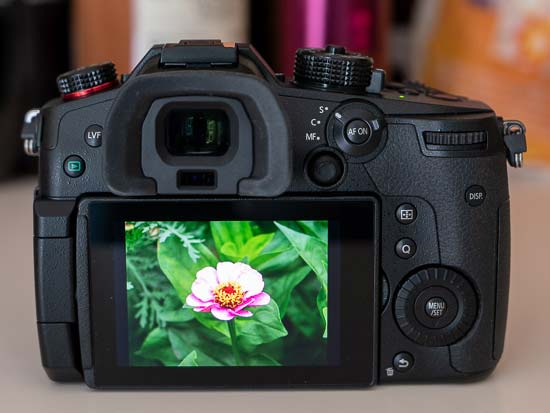 |
Panasonic have significantly upgraded the image stabilisation system on the GH5 II. The 5-axis Dual I.S. MK II system incorporates gyro-sensor technology to combine the 2-axis stabilisation from the lens (if it has OIS built-in) and 5-axis stabilisation from the camera body, resulting in compensation for up to 6.5-stops slower shutter speed, which is 1.5 stops better than the GH5.
Unlike a conventional DSLR camera which uses a phase detection auto-focus system, the Panasonic Lumix GH5 II employs a 225-point Contrast AF system, similar to that commonly used by compact cameras.
The GH5 II still has one of the fastest AF systems of any interchangeable lens camera, though, be that a compact system camera or a DSLR, with a claimed speed of just 0.05 seconds when used with certain lenses thanks to the inclusion of DFD (Depth from Defocus) technology, which further shortens the time to set focus.
This is incredibly quick, and there were also almost no occasions when the GH5 II failed to lock onto the subject, especially when using the centre AF point, resulting in a responsive and importantly reliable AF system.
New to the GH5 II are the Human Detect AF and Animal Recognition autofocusing algorithims that have been inherited from the full-frame Lumix S5 camera. There are a wide range of AF modes on offer, including Human/Animal Detect, Tracking, 225-Area, Zone (Vert/Horz), Zone (Oval), 1-Area+, 1-Area and Pinpoint.
On the front of the Panasonic Lumix GH5 II is a small focus-assist and self-timer indicator lamp, lens release button, customisable unmarked Function6 button, metal lens mount, flash sync socket and a sculpted, rubberised hand-grip that’s really nice to use.
 |
By default the Fn6 button cleverly toggles between showing a live preview of the effects of the current aperture (effectively a digital version of Depth of Field Preview) and the current shutter speed. The latter will prove especially useful for beginners, providing a visible way of checking how different shutter speeds will affect the capture of different subjects – running water is a good example.
The majority of the GH5 II’s exterior is matt black plastic, with the handgrip, right-hand and left-hand corners finished in a more tactile rubberised coating.
Found on top of the Panasonic GH5 II are the burst mode/6K photo/bracketing/self-timer/time-lapse dial on the left, external flash hotshoe, stereo microphones, lockable shooting mode dial surrounded by the on/off switch, shutter release button, front control dial, white balance, ISO and exposure compensation buttons, a customisable Photo Styles button and a large one-touch movie record button that’s now entirely red. There’s also a tiny LED to indicate if wi-fi is on or off or if USB charging is in operation.
The row of white balance, ISO and exposure compensation buttons make it extremely easy to access the camera’s key exposure controls, while the dual control dials make it easy to use the fully Manual shooting mode.
The GH5 II has both a traditional mechanical shutter and a silent electronic shutter, which as well as not spooking your subject ensures that your subject is completely sharp by avoiding pixel shifting. The Delay Shutter option helps to remove the effect of hand-shake by releasing the shutter after a specified time (8, 4, 2 or 1 seconds).
The start-up time from turning the Lumix GH5 II on to being ready to take a photo is impressively quick at less than a second. It takes about 1/2 second to store a JPEG image, allowing you to keep shooting as they are being recorded onto the memory card – there is no perceptible LCD blackout between each image. Storing a single RAW image takes around 1 second and doesn’t lock up the camera in any way – you can use the menu system or shoot another image while the first file is being written to memory.
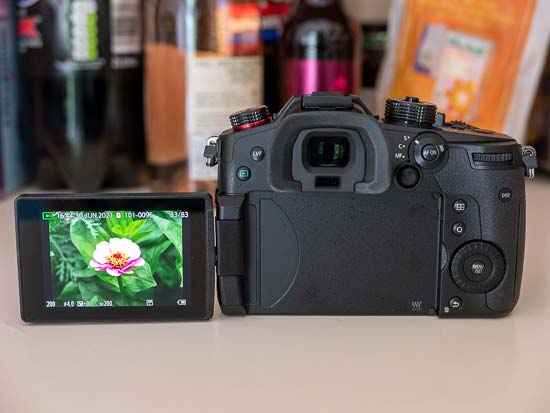 |
The Panasonic Lumix GH5 II has an excellent Burst mode which enables you to take 12 frames per second with the focus and exposure locked at the first frame or 7.5fps with AF tracking. The GH5M2 can now shoot continuously for up to 999 JPEG images at the highest image quality or 108 RAW files, compared to 600 JPEG and 60 RAWs for the GH5.
The traditional shooting mode dial lets you choose from the different exposure modes. The usual selection of Program, Aperture Priority, Shutter Priority, and Manual are available for the more experienced photographers.
Additionally there are 4 custom modes, marked C1, C2, C3 and C4, which allow you to configure your favourite settings and quickly access them, Intelligent Auto for less experienced users, and the Creative Movie mode which provides access to all of the camera’s extensive range of video options.
The Panasonic Lumix GH5 II’s range of 22 different filter effects, which were denoted by an artist’s palette on the GH5’s shooting mode dial, but are now only accessible via the main menu system (effectively replaced by the C4 mode). There are also 11 different customisable Photo Styles which still allow full control of the camera’s settings.
The red movie record button on the top, as you’d expect, allows you to start recording a movie with a single push of a button and then stop recording by pressing the same button, regardless of which shooting mode is currently selected. This is a lot more intuitive than having to select the movie mode then press the shutter button, although you can still start/stop movie recording via the GH5 II’s shutter button if you wish.
The Creative Movie shooting mode, accessed via the mode dial on top of the GH5 II, allows you to set the shutter speed, aperture or both settings manually during recording (a Program option is also available). Changing the shutter speed is especially suitable for shooting fast-moving subjects, whilst the ability to control the aperture is convenient when there are several subjects at different distances.
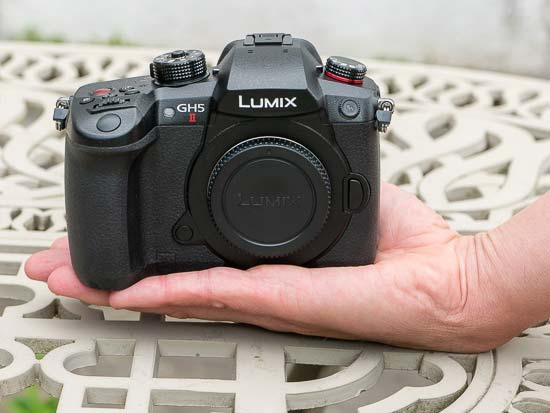 |
The Panasonic Lumix GH5 II has a plethora of movie options, making it one of the most full-featured interchangeable lens cameras on the market in terms of video. It principally offers internal 10-bit 4:2:0 4K (3840 x 2160 pixels) at up to 60fps with a bitrate of 150Mbps. Cinema 4K is also available in 10 bit 4:2:2 at up to 30fps, as is Anamorphic recording up to 60fps with the option of image stabilisation.
By contrast, the GH5 can only internally record 4:2:0 4K at 50/60fps rate in 8-bit, although both models are equally capable of outputting 4K 60p 10 bit in 4:2:2 to an external recorder.
The GH5 II uses the full area of the sensor to record then downsamples it in-camera, which means that your framing won’t be cropped when composing.
The GH5 II is one of the few cameras that isn’t geographically limited, as you can choose from both NTSC and PAL settings, so you get the full range of frame rates regardless of where you bought the camera. It’s also capable of recording continuously for an unlimited time in any mode until your memory card is full.
Another attraction is the ability to output a 10-bit 4:2:0 signal via HDMI and record it internally at the same time. You can set the luminance level for 10-bit capture (0-1023, 64-940 or 64-1023), and the flat V-Log L profile is now pre-installed on the camera rather than being a costly upgrade as on the GH5.
New Cinelike D2 / Cinelike V2 profiles have been inherited by the GH5 II from the flagship full-frame S1H video camera, as well as new video shooting assist functions which include a frame indicator (red for video and blue for live streaming), frame markers, vertical position information, luminance spot metering, and the ability to filter the various Rec Quality setting options and register frequently used combinations for quick recall.
 |
The Variable Frame Rate option allows you to set the video frame rate from 2fps to 180fps while recording Full HD video. Available for both JPEG photos and movies, the EX Tele Conversion option extends the focal length attached lens by 2x for still images, by 1.4x for 4K/UHD video recording, and 2.7x for 1080p without any loss of image quality.
The Focus Transition tool allows you to create three focus points, between which the GH5 II automatically shifts the focus at a constant speed. There’s a choice of five different speeds, and you can choose whether to start the transition immediately when recording begins or add a 5 or 10 second delay.
Dolby-quality stereo sound is recorded during video capture via the internal mics on top of the camera, which is a big improvement on the rather muffled noises recorded by most digital cameras, helped by the wind cut function which blocks out most of the noise from background wind.
You can also add the optional DMW-XLR1 XLR microphone adapter which attaches via the hotshoe and offers two XLR audio inputs with physical switches and dials for changing the levels, gain, and low cut filter of each input individually.
Live streaming is perhaps the biggest new feature that has been introduced on the GH5M2. The GH5M2 is capable of wireless live streaming in 1080/60p at 16Mbps via the LUMIX Sync smartphone app, or by connecting directly to a Wi-Fi router.
For live Wired USB-LAN IP Streaming (FWUP), the dedicated LUMIX Webcam Software is available for free download. In addition, the new camera will receive a future firmware update later in 2021 to add RTP/RTSP wired IP streaming.
In contrast, the older GH5 offers no live streaming capabilities of any kind.
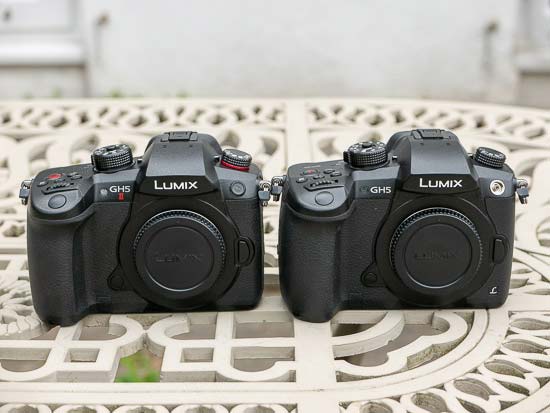 |
On the rear of the Lumix GH5 II is the 3 inch OLED screen with 100% scene coverage, smaller than the one on the GH5 but crucially offering more resolution. The rotating, free-angle monitor, which is hinged on the left side of the camera (looking from the rear), can be flipped out and twisted through 270 degrees.
You can use the screen as a waist-level viewfinder, holding the camera overhead, and even for turning the GH5 II on yourself for arm-length self-portraits. There’s also the added benefit of folding the screen away against the camera body to protect it when stored in a camera bag, preventing it from becoming marked or scratched.
The 1,840K pixel screen offers a wider colour gamut and brightness that has been improved by 150% compared to the original GH5.
The Auto Power LCD function automatically detects the current lighting conditions and boosts the LCD backlighting by up to 40% when shooting outdoors in bright sunshine, helping to keep the screen visible. The handy level gauge indicates the two directions of horizontal lean and front/rear tilt.
The Panasonic Lumix GH5 II inherits the GH5’s clever touchscreen interface. Panasonic have wisely restricted the amount of things that you can do by interacting with the screen, and indeed you can still operate everything on the camera without having to push and prod the LCD at all.
You would be missing out on a lot of genuinely useful functionality, though, which really improves the overall shooting experience. A clever feature called Touchpad AF allows you to move the focus point area with your finger on the LCD while you’re looking through the EVF.
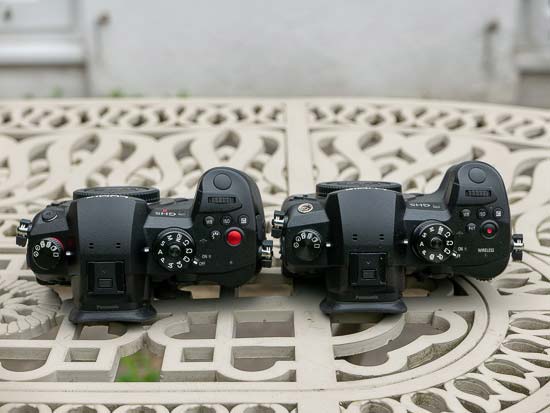 |
The most immediately noticeable function is the ability to use the 1-area AF mode to focus on your main subject simply by touching it on the LCD. If the subject then moves, the Panasonic Lumix GH5 II cleverly follows it around the screen using the the AF tracking function. If the subject exits the frame entirely, simply recompose and tap it again to start focusing. Impressive stuff that makes focusing on off-center subjects fast and intuitive.
It is a little too easy to accidentally press the screen and set the focus point to the wrong area for the current subject, but a simple tap in the middle of the LCD will center the AF point (or you can turn this feature off altogether). The size of the AF point itself can also be changed via an interactive onscreen slider.
If you prefer to manually focus rather than use the fast AF system, you can magnify any part of the subject by 1x, 5x or 10x by simply dragging the image around the screen. The final touchscreen ability from an image composition point of view is the ability to release the shutter, with a small icon on the right hand screen enabling this functionality, and then a single on-screen tap all that’s required to take the picture.
All of the menu options can be changed via the touchscreen interface, including the Main menu system. You can also control image playback by touching the screen, with the ability to tap a thumbnail to see the full-size version, scroll through your images by dragging them from side to side, and magnifying them up to 16x.
The Panasonic GH5 II has a very slightly improved electronic viewfinder. The OLED unit has a large 1.52x (0.76x on 35mm equiv.) magnification, 100% field of view, 1000:1 contrast ratio and 3,680K-dot resolution, resulting in one of the best EVFs that we’ve ever used. The EVF (and also the main LCD screen) now operates at a native rate of up to 120fps, twice as fast as the GH5, which helps make it flicker-free.
There are three 6K Photo functions – 6K Burst Shooting, 6K Burst (Start/Stop) and 6K Pre-burst – which all record continuous 18 megapixel stills at a 30fps shooting rate. 6K Burst allows you to continuously record 18 megapixel images at 30fps, 6K Pre-Burst does the same but for one second prior to and one second after pressing the shutter button in order, giving you 60 frames to choose from, and 6K Burst (S/S) allows you to playback your video, pause at the chosen moment, and use the shutter button to mark a chosen frame from the video and save it as a single 18 megapixel frame. The GH5 II also offers the same option for 4K Photo, which doubles the capture speed to 60fps but lowers the effective resolution to 8 megapixels.
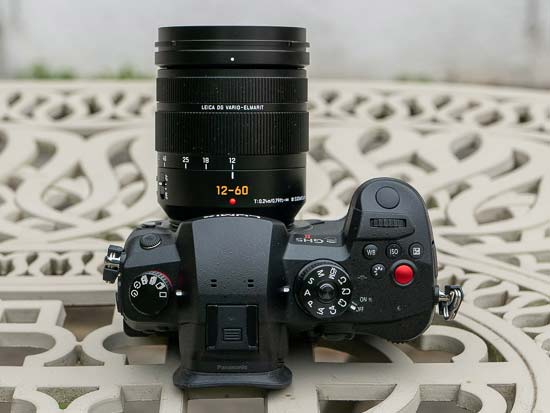 |
The Post Focus mode allows you to take a series of photos all with a different focus point, and then choose your preferred one after you’ve captured the shot. This can be more useful for some subjects than others, for example with macro it’s a great idea. Focus Stacking enables you to take multiple shots with different aperture values, then combine them into a single image and choose how much of the subject is in focus, again good news for macro photographers.
The Panasonic Lumix GH5 II also has a time lapse function in which you can set the time interval and the number of images to take, plus a multi-exposure option that lets you combine up to four exposures in a single frame, while the Stop Motion Animation mode allows you to create unique stop motion videos.
The Wi-Fi function (802.11ac) lets you use your smartphone to change the camera settings (focus setting, exposure compensation, ISO, WB and Photo Styles) and even fire the shutter button remotely (including interval video recordings), while the auto transfer function automatically backs up your photos onto a tablet. You can also use GPS data from your smartphone to record the shooting location onto your images. The Bluetooth option establishes a low-energy, permanent connection between the camera and a smart device for easier transfer of images.
On the rear of the Panasonic Lumix GH5 II, from left to right, is a Playback button, an LVF button for manually switching between the two viewing methods (useful if you turn the eye sensor off) which can also be configured as the Fn5 button, conveniently located AF On button (in place of the shared AF/AE Lock button on the GH5) which is surrounded by the AF Type switch, the rear control dial, which is used for, amongst other things, changing the aperture and shutter speed by turning from left to right and back again, and a thumb-controlled joystick. This allows you to quickly and easily select the AF point without taking your eyes off the subject and is a very useful inclusion.
Underneath are the Quick Menu/Fn2, Fn3/AF Mode and Display buttons. In shooting mode, the Display button alternates between turning the display off, the main camera settings as icons, no settings at all, and an Info Display which shows the current key settings in a clear graphical format. You can additionally press the Q.Menu button and then use the navigation pad to move between the onscreen options.
The Q.Menu button provides quick access to most of the principal controls, including ISO speed, image size, image quality and white balance (there are 16 settings in total, depending upon the shooting mode selected). You can still access all of these options from the main menu system too.
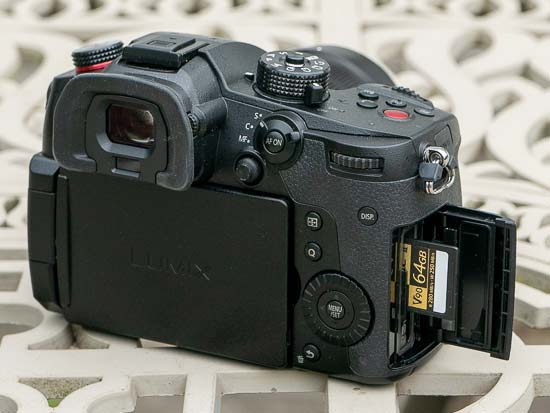 |
The Panasonic Lumix GH5 II has a traditional 4-way navigation pad system with a circular scroll wheel and Menu/Set button in the centre. Unlike other G-series cameras, the four directions on the d-pad don’t have a specific function, other than to move through and select options, playback images etc. The circular scroll wheel can also accomplish many of the same things. The Delete button underneath the navigation pad doubles up as the Fn4 button.
The main menu system on the GH5 II is very clear and straight-forward to use and is accessed by pressing the Menu/Set button in the middle of the navigation pad. There are up to 6 main menus represented by a column of icons on the left of the screen, depending on which shooting mode you’re currently using, which then show up to 7 sub-menus each showing 8 options onscreen at once.
On the bottom of the Panasonic Lumix GH5 II is a metal tripod socket, importantly in-line with the middle of the lens barrel, and the battery compartment housing the new DMW-BLK22 battery, and on the right side are the Remote port and the dual and SD/SDHC/SDXC memory card slots.
On the left is the Remote/Mic socket for use with the optional remote shutter release or 3.5mm external microphone, and three connection ports, including a port for external headphones (again 3.5mm in size), and a very welcome full-sized HDMI port for connecting the GH5 II to a HD television or monitor.
Image Quality
All of the sample images in this review were taken using the 20M Fine JPEG image size option, which gives an average image size of around 8Mb.
The Panasonic Lumix GH5 II produced images of outstanding quality during the review period. It produces noise-free images at ISO 100 to 1600, with limited noise starting to appear at ISO 3200. ISO 6400 and 12800 exhibit quite visible noise and loss of fine detail, while the fastest setting of 25600 looks much better on paper than in reality.
The various Photo Styles and Filters allow you to quickly and easily customise the look of the camera’s JPEG images before you take them, while the Intelligent D-range mode extracts a little more detail out of the shadow and highlight areas. The night photograph was excellent, with the maximum shutter speed of 60 seconds allowing you to capture plenty of light.
Noise
There are 9 ISO settings available on the Panasonic Lumix GH5 II which you can select at any time if the camera is in one of the creative shooting modes. Here are some 100% crops which show the noise levels for each ISO setting for both JPEG and RAW formats.
|
JPEG |
RAW |
|
ISO 100 (100% Crop) |
ISO 100 (100% Crop) |
 |
 |
|
ISO 200 (100% Crop) |
ISO 200 (100% Crop) |
 |
 |
|
ISO 400 (100% Crop) |
ISO 400 (100% Crop) |
 |
 |
|
ISO 800 (100% Crop) |
ISO 800 (100% Crop) |
 |
 |
|
ISO 1600 (100% Crop) |
ISO 1600 (100% Crop) |
 |
 |
|
ISO 3200 (100% Crop) |
ISO 3200 (100% Crop) |
 |
 |
|
ISO 6400 (100% Crop) |
ISO 6400 (100% Crop) |
 |
 |
|
ISO 12800 (100% Crop) |
ISO 12800 (100% Crop) |
 |
 |
|
ISO 25600 (100% Crop) |
ISO 25600 (100% Crop) |
 |
 |
File Quality
The Panasonic Lumix GH5 II has 2 different JPEG image quality settings available, with Fine being the highest quality option. Here are some 100% crops which show the quality of the various options, with the file size shown in brackets.
|
Fine (8.6Mb) (100% Crop) |
Normal (4.11Mb) (100% Crop) |
 |
 |
|
RAW (23.1Mb) (100% Crop) |
|
 |
Night
The Panasonic Lumix GH5 II’s maximum shutter speed is 60 seconds and there’s also a Bulb option for exposures up to 30 minutes long, which is excellent news if you’re seriously interested in night photography. The shot below was taken using a shutter speed of 30 seconds at ISO 100. The camera takes the same amount of time again to apply noise reduction, so for example at the 15 second setting the actual exposure takes 30 seconds.

Photo Styles
Panasonic’s Photo Styles, similar to Nikon’s Picture Styles, Canon’s Picture Controls and Olympus’ Picture Modes, are preset combinations of different sharpness, contrast, saturation and noise reduction settings. The 15 available Photo Styles are shown below in the following series, which demonstrates the differences. There are also four Custom options so that you can create your own looks.
|
Standard |
 |
|
Vivid |
 |
|
Natural |
 |
|
L.ClassicNeo |
 |
|
Flat |
 |
|
Landscape |
 |
|
Portrait |
 |
|
Monochrome |
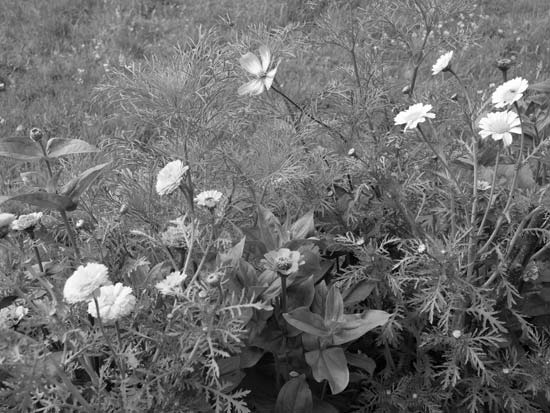 |
|
L.Monochrome |
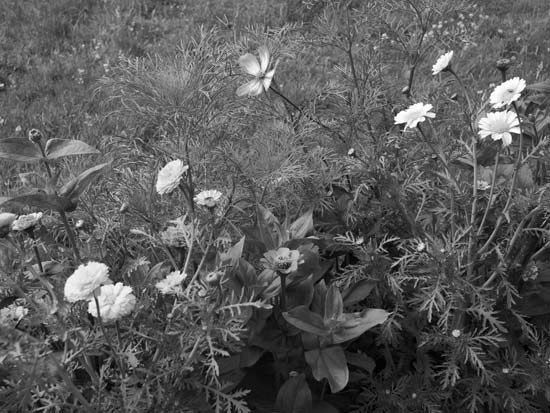 |
|
L.Monochrome D |
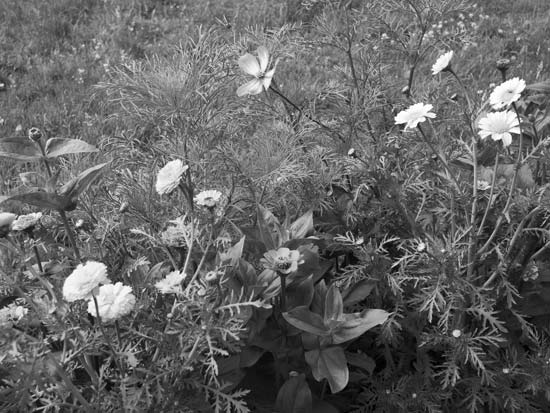 |
|
L.Monochrome S |
 |
|
Cinelike D2 |
 |
|
Cinelike V2 |
 |
|
Like709 |
 |
|
V-Log L |
 |
Filter Effects
The Panasonic Lumix GH5 II has an extensive range of digital filter effects, denoted by an artist’s palette in the shooting mode menu, with 22 different options on offer.
|
Expressive |
 |
|
Retro |
 |
|
Old Days |
 |
|
High Key |
 |
|
Low Key |
 |
|
Sepia |
 |
|
Monochrome |
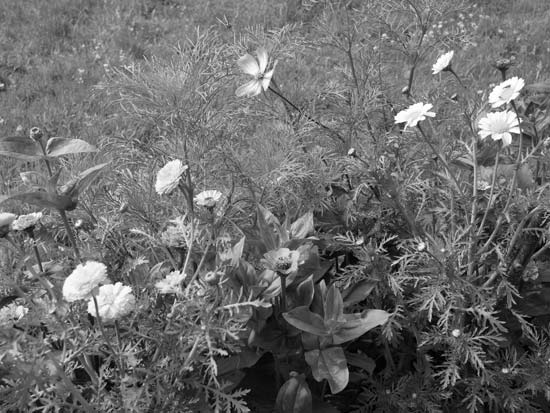 |
|
Dynamic Monochrome |
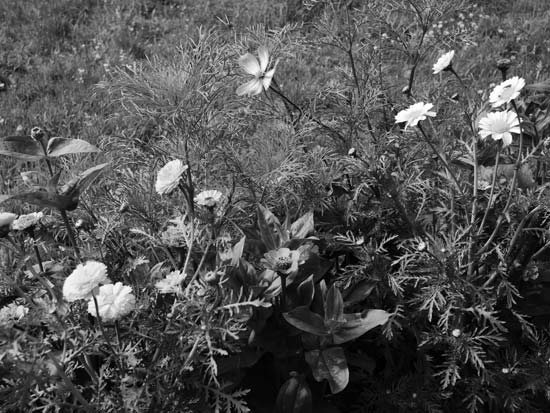 |
|
Rough Monochrome |
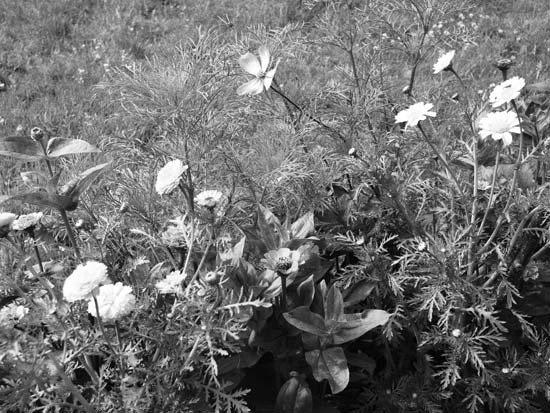 |
|
Silky Monochrome |
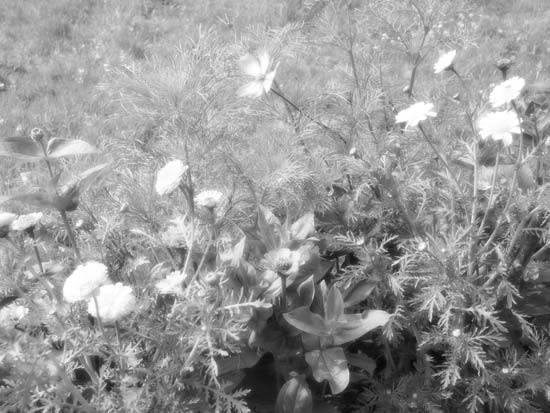 |
|
Impressive Art |
 |
|
High Dynamic |
 |
|
Cross Process |
 |
|
Toy Effect |
 |
|
Toy Pop |
 |
|
Bleach Bypass |
 |
|
Miniature |
 |
|
Soft Focus |
 |
|
Fantasy |
 |
|
Star Filter |
 |
|
One Point Color |
 |
|
Sunshine |
 |
Post Focus and Focus Stacking
Post Focus is a function that enables users to select the in-focus area after shooting simply by touching it on the LCD screen. The first three images show the effects of switching between the three memory cards.
The Post Focus Stacking function enables users to take multiple images of the same frame with different areas in focus, then combine all or selected focus areas into one image. The fourth image below shows the effect of merging the first three images into one stacked image.
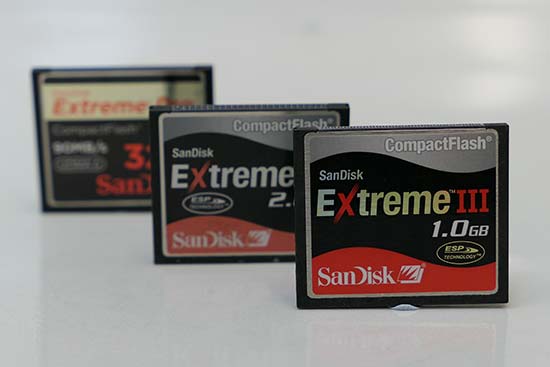
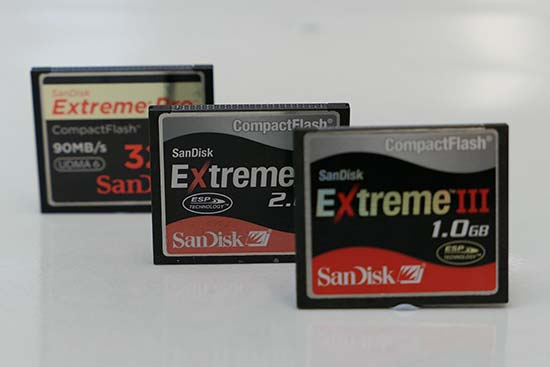
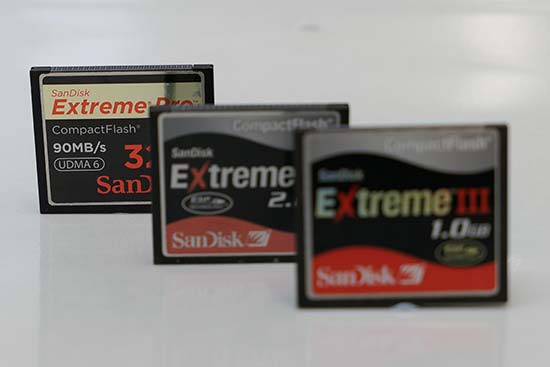
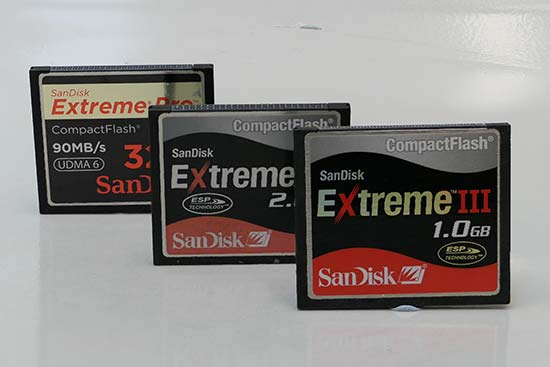
Intelligent Dynamic Range
The Panasonic Lumix GH5 II’s Intelligent Dynamic feature adjusts the exposure setting to record more detail in the highlights and shadows, with three strengths available – low, standard and high.
Multiple Exposure
In the Multiple Exposure mode the Panasonic Lumix GH5 II combines multiple frames to create a single image.
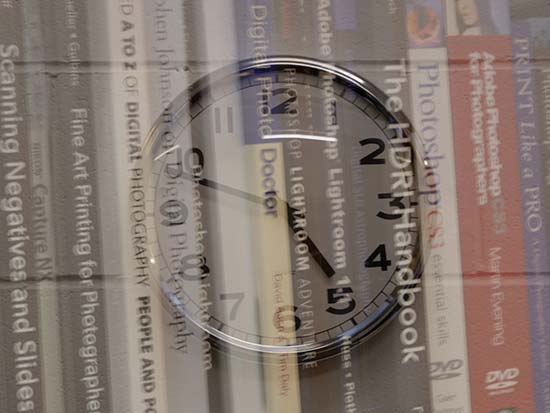
Sample Images
This is a selection of sample images from the Panasonic Lumix GH5 II camera, which were all taken using the 20 megapixel Fine JPEG setting. The thumbnails below link to the full-sized versions, which have not been altered in any way.
Sample RAW Images
The Panasonic Lumix GH5 II enables users to capture RAW and JPEG format files. We’ve provided some Panasonic RAW (RW2) samples for you to download (thumbnail images shown below are not 100% representative).
Sample Movies & Video
This is a sample movie at the quality setting of 3840×2160 pixels at 50 frames per second. Please note that this 15 second movie is 182Mb in size.
This is a sample movie at the quality setting of 3840×2160 pixels at 25 frames per second. Please note that this 15 second movie is 173Mb in size.
This is a sample movie at the quality setting of 3840×2160 pixels at 25 frames per second. Please note that this 15 second movie is 129Mb in size.
This is a sample movie at the quality setting of 1920×1080 pixels at 50 frames per second. Please note that this 15 second movie is 52Mb in size.
This is a sample movie at the quality setting of 1920×1080 pixels at 25 frames per second. Please note that this 15 second movie is 39Mb in size.
Product Images

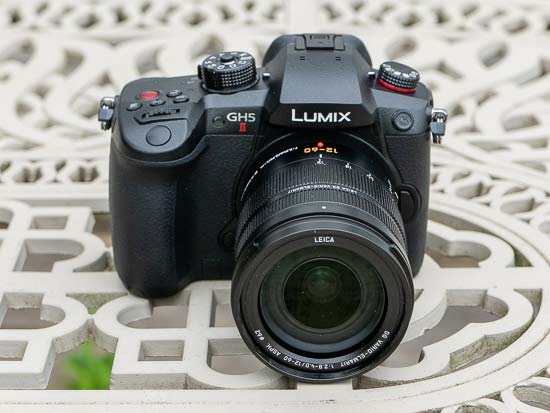
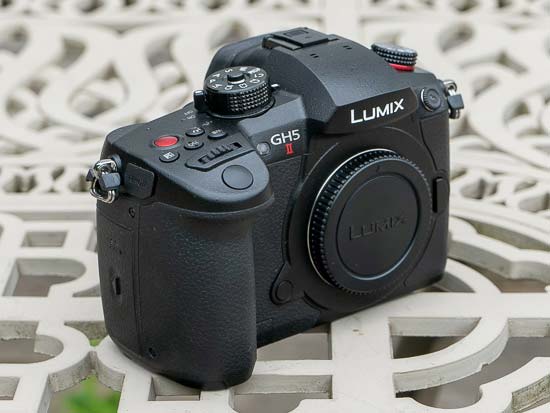



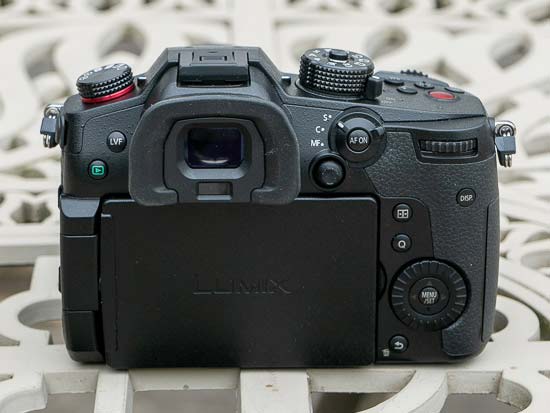
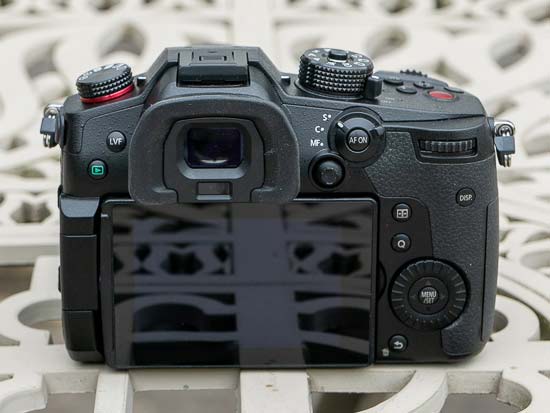
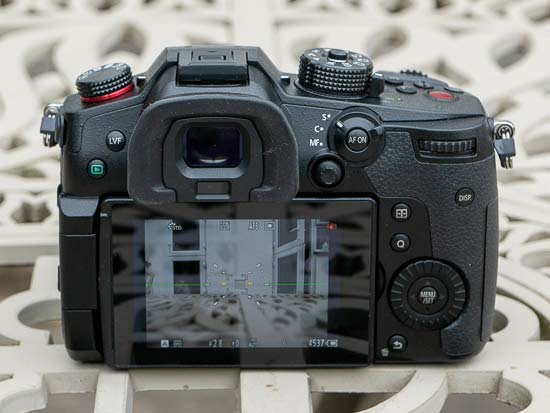
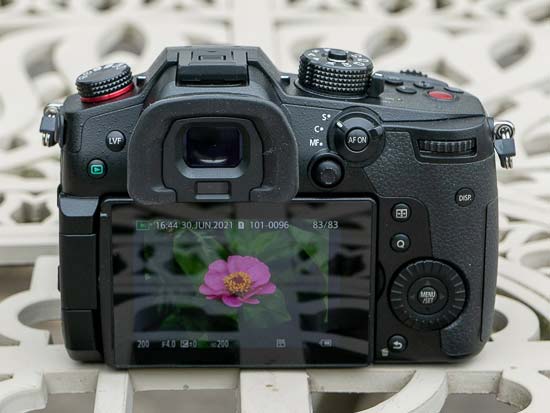
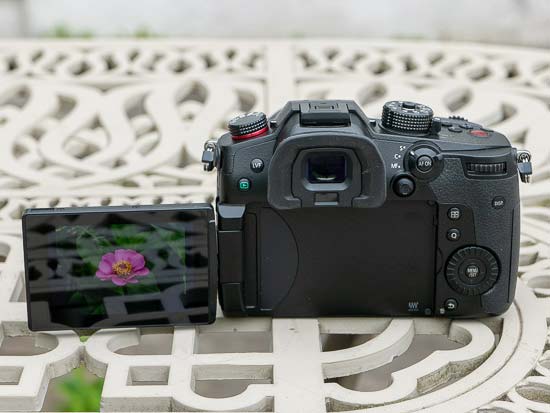
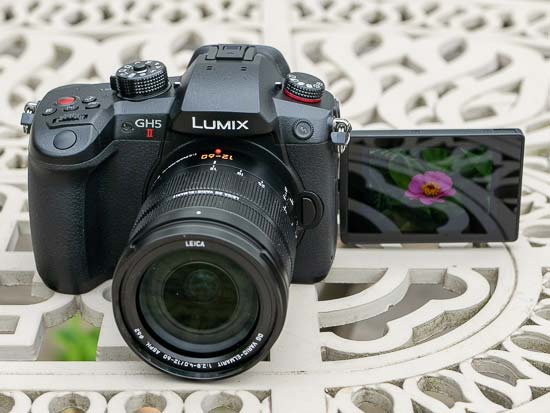
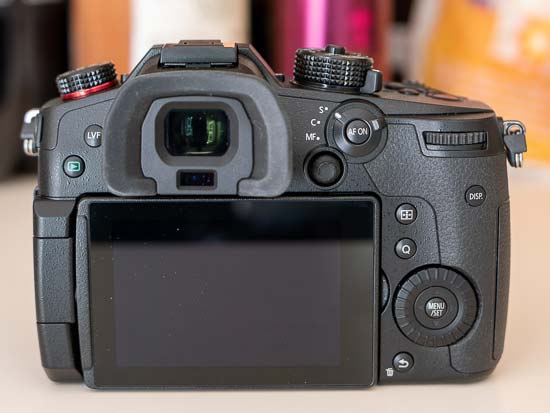
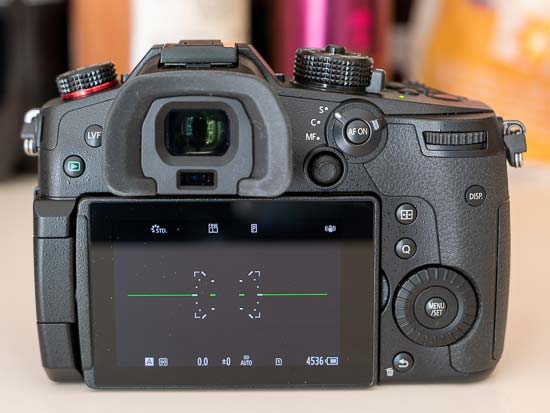

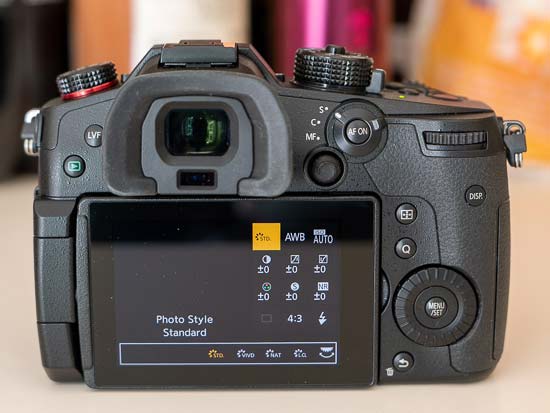
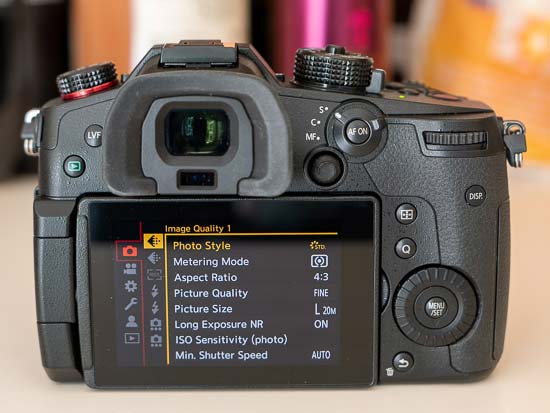
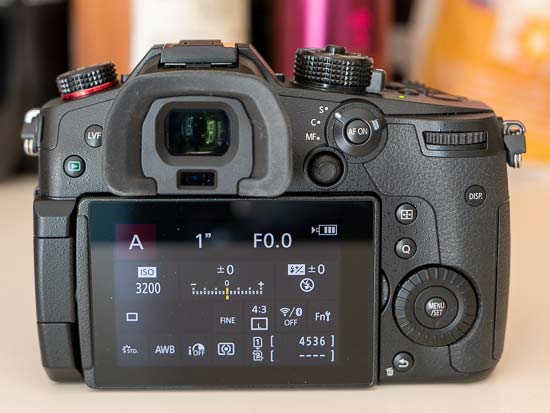

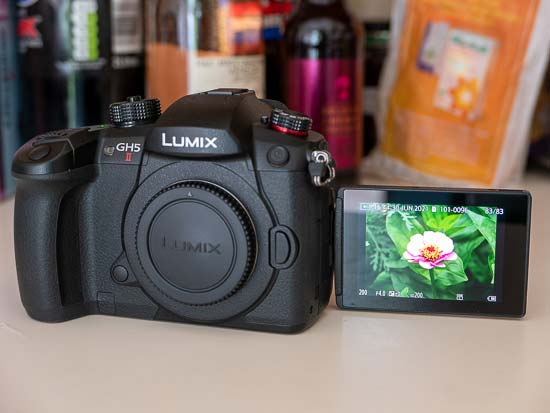

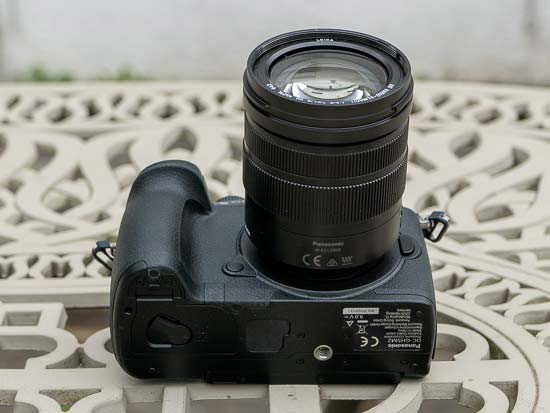
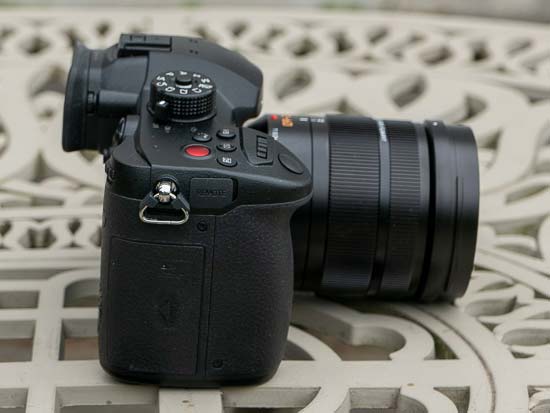
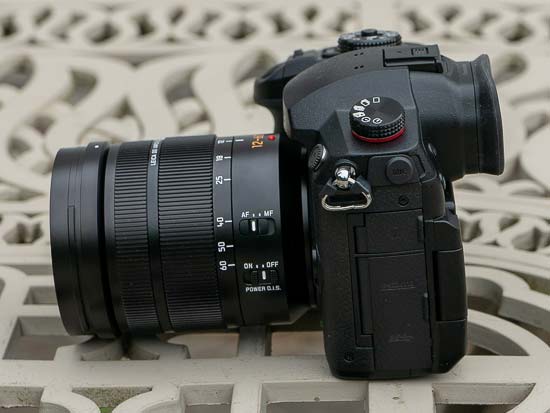

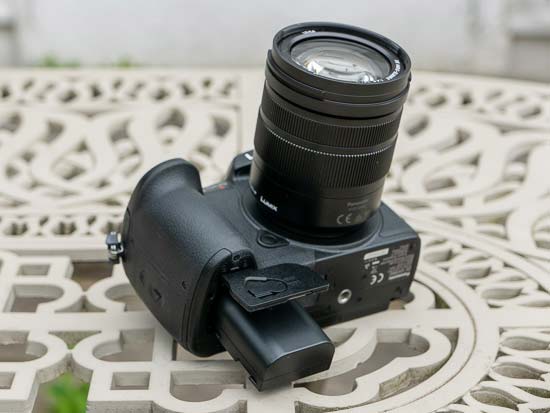



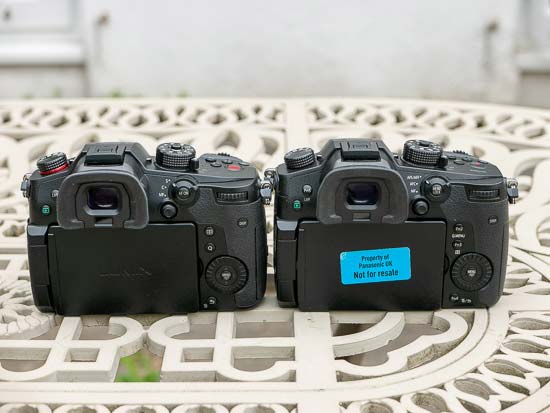

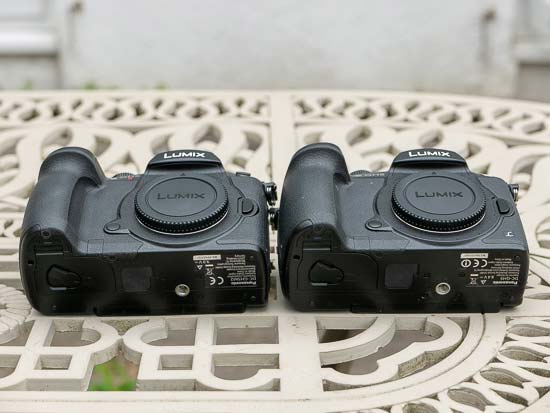
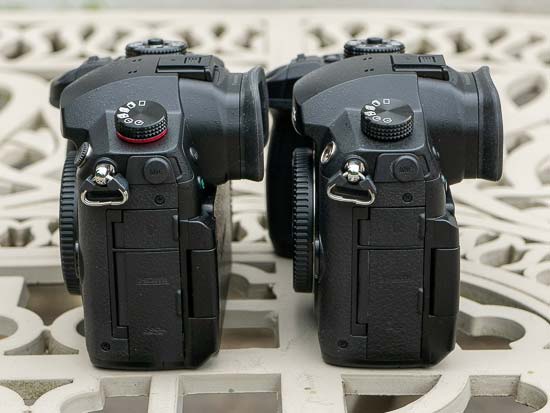
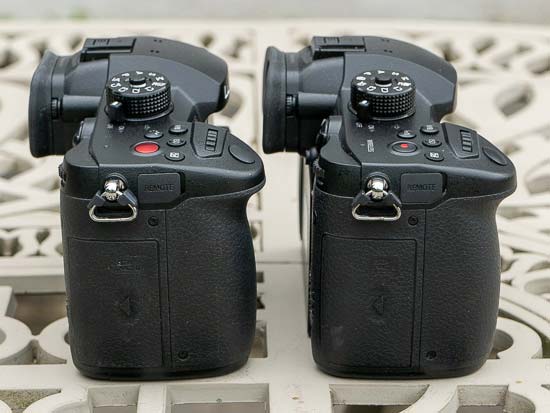
Conclusion
The new Lumix GH5 II is a rather modest refresh of the original GH5 that’s designed to keep the series relevant in 2021 and pique the interest of new users, rather than convince current GH5 owners to upgrade.
With the upcoming GH6 already pre-announced and on the near horizon, you may be wondering why Panasonic have even bothered with the GH5 II. After all, the original GH5 was one of their best-selling cameras of all time and even to this day remains a model that has lots of appeal for hybrid stills and videographers.
Clearly ahead of its time in a lot of ways, the GH5 remains a great buy even a full four years after its release back in 2017, so much so that if you’ll never use the Mark II’s main new feature, Live Streaming, the original camera is still more than worth tracking down on sale.
Having said that, live streaming alone will be enough to turn the heads of some users, as the GH5 II is currently one of the only cameras that supports it without having to use a computer to do so. Being able to wirelessly stream direct from the GH5 II to YouTube or an RTMP compatible platform via a mobile or a Wifi hotspot certainly frees you up.
The other new features are more nice-to-haves rather than must-haves – the smaller but higher resolution LCD screen and the larger battery have presumably been introduced because of parts availability in the supply chain, while the new processor allows for Lumix S5-series levels of auto-focusing and video options that are great to see.
With support for USB-C charging, improved image stabilisation and a now free V-Log L profile, these relatively small changes do add up to undoubtedly make the GH5 II a “better” camera than its predecessor, helped in no small part by a lower price tag on launch than the GH5 enjoyed.
Overall, whilst it may not offer any earth-shattering new features or innovations (they’re presumably reserved for the GH6), the GH5 Mark II remains a well-thought-out, comprehensive hybrid video/still camera, just like its predecessor, which given that we liked it so much first time around is a high accolade indeed.
| Ratings (out of 5) | |
|---|---|
| Design | 4.5 |
| Features | 5 |
| Ease-of-use | 4.5 |
| Image quality | 5 |
| Value for money | 5 |
Main Rivals
Listed below are some of the rivals of the Panasonic Lumix GH5 II.
The EOS M50 Mark II is Canon’s newest entry-level mirrorless camera for 2021. With 4K/25p and 1080/60p video modes, a flippy LCD screen and a number of vlogger-friendly improvements, plus a 24 megapixel APS-C sensor, 10fps burst shooting and Canon’s excellent Dual Pixel AF system, could it be the perfect affordable camera for YouTubers, TikTokers and stills photographers alike? Find out now by reading our Canon EOS M50 Mark II review…
The Fujifilm X-T4 is the successor to the very popular X-T3, which was released in 2018, principally adding in-body image stabilisation, greatly improved battery life, a quicker and quieter mechanical shutter, enhanced continuous AF and a number of design tweaks. Can the new X-T4 improve on what was already an outstanding camera? Find out now by reading our in-depth Fujifilm X-T4 review…
Nikon have introduced their first APS-C, cropped-sensor mirrorless camera with the launch of the Z50, accompanied by two kit zoom lenses. Can the Z50 take on the likes of the well established Sony A6000-series and Canon EOS-M range, not to mention Fujifilm with its line-up of excellent APS-C bodies and lenses? Find out now by reading our in-depth Nikon Z50 review.
The Nikon Z6 II mirrorless camera is an evolutionary upgrade of the original Z6, principally improving the autofocusing, buffer and video and adding a second memory card slot. Is this enough to compete with its main rivals? Find out now by reading our in-depth Nikon Z6 II review, complete with full size sample photos and videos…
The new OM-D E-M1 Mark III is a serious camera for serious photographers, designed to showcase the very best that Olympus has to offer. In the increasingly competitive high-end camera market, does it have what it takes to stand out from the crowd and attract new users as well as satisfy existing ones? Read our Olympus OM-D E-M1 Mark III review to find out…
The Panasonic Lumix GH5 is one of the most hotly-anticipated cameras of 2017, offering even more video options than its popular predecessor and seriously beefed up photo capabilities. Read our in-depth Panasonic Lumix GH5 review complete with with sample photos, test shots, videos and more…
The Panasonic Lumix GH5S is a new video-centric mirrorless camera that excels in low-light conditions thanks to it’s 10 megapixel sensor, latest Venus processing engine, and innovative Dual Native ISO technology. Check out our Panasonic Lumix GH5S review for our full verdict…
The Panasonic S5 is a brand new hybrid full-frame mirrorless camera that’s equally as capable at shooting both stills and video. In an ever more crowded market, does the Lumix S5 offer enough to stand out against the likes of the Sony A7 III, Canon EOS R and Nikon Z6? Read our in-depth review of the Panasonic S5 to find out, complete with full-size sample photos and videos.
The A6600 is the new all-singing, all-dancing flagship camera in Sony’s extensive range of APS-C mirrorless cameras, but does it offer enough to out-gun both its main rivals and its cheaper siblings? Find out now by reading our in-depth Sony A6600 review, complete with full-size sample images and videos.
It’s been 5 long years since its popular predecessor was launched, but now the new Sony A7S III full-frame mirrorless camera is finally with us! Is this the most capable hybrid 4K video camera available today? Find out now by reading our in-depth Sony Alpha 7S III review, complete with full-size photos and videos for you to download and evaluate…
The Sony ZV-1 is a new compact camera that’s been built from the ground up for vlogging, with a vari-angle screen, fast auto-focusing, three-capsule direction microphone, and a wealth of vlogger-friendly shooting modes. Is this the ultimate camera for aspiring YouTube creators? Read our in-depth Sony ZV-1 review to find out…
Review Roundup
Reviews of the Panasonic Lumix GH5 II from around the web.
The clue is in the name. A Mark II version of anything is likely to be a refresh rather than a whole new camera, and it’s the same here. But while the GH5 II might appear superficially similar to its predecessor, it incorporates a large number of improvements and additions that make quite a difference when you add them together – and they are even more impressive given the price.
Read the full review »
If you’re looking for a well-built, lightweight mirrorless camera with excellent handling, a fantastic range of video shooting options and solid stills performance, the GH5 Mark II his well worth a look. The GH5 was already a great choice, and the tweaks here just make it all the more appealing. If you own the original GH5, though, the GH5 Mark II seems slightly redundant: aside from minor performance upgrades and the addition of live streaming, it’s largely unchanged. Unless you really need that live-streaming functionality, you’re better off waiting for the Panasonic GH6.
Read the full review »
Specifications
TYPE
-
Type
- Digital Single Lens Mirrorless camera
-
Recording media
- SD Memory Card / SDHC Memory Card* / SDXC Memory Card*
*Compatible with UHS-I/UHS-II UHS Speed Class 3 standard SDHC/SDXC Memory Cards and UHS-II Video Speed Class 90 standard SDXC Memory Cards.
- SD Memory Card / SDHC Memory Card* / SDXC Memory Card*
-
Lens mount
IMAGE SENSOR
-
Type
- Live MOS sensor (17.3 x 13.0 mm)
-
Camera effective pixels / Total pixels
- 20.33 megapixels / 21.77 megapixels
-
AR (Anti Reflection) coating
-
Aspect ratio / Color filter
- 4:3 / Primary color filter
-
Dust reduction system
LATITUDE
STILL IMAGE
-
Recording file format
-
Still image
- JPEG (DCF, Exif 2.31), RAW
-
6K PHOTO (*¹) / 4K PHOTO (*¹)
- 6K PHOTO: MP4 (H.265/HEVC, Audio format: AAC (2ch))
4K PHOTO: MP4 (H.264/MPEG-4 AVC, Audio format: AAC (2ch))
Extracted still images: JPEG (DCF, Exif 2.31)
- 6K PHOTO: MP4 (H.265/HEVC, Audio format: AAC (2ch))
-
-
Aspect ratio
-
File size (Pixels)
-
4:3
- 5184×3888(L) / 3712×2784(M) / 2624×1968(S) / 4992×3744(6K PHOTO) / 3328×2496(4K PHOTO)
-
3:2
- 5184×3456(L) / 3712×2480(M) / 2624×1752(S) / 5184×3456(6K PHOTO) / 3504×2336(4K PHOTO)
-
16:9
- 5184×2920(L) / 3840×2160(M) / 1920×1080(S) / 3840×2160(4K PHOTO)
-
1:1
- 3888×3888(L) / 2784×2784(M) / 1968×1968(S) / 2880×2880(4K PHOTO)
-
-
Image quality
- RAW / RAW+Fine / RAW+Standard / Fine / Standard
-
Color space
MOTION PICTURE
-
Recording file format
- MOV: H.264/MPEG-4 AVC, H.265/HEVC (Audio format: LPCM (2ch 48kHz/16-bit, 48kHz/24-bit*, 96kHz/24-bit*)) *When attaching DMW-XLR1 (sold separately).
MP4: H.264/MPEG-4 AVC, H.265/HEVC (Audio format: AAC (2ch))
- MOV: H.264/MPEG-4 AVC, H.265/HEVC (Audio format: LPCM (2ch 48kHz/16-bit, 48kHz/24-bit*, 96kHz/24-bit*)) *When attaching DMW-XLR1 (sold separately).
-
System frequency
- 59.94Hz / 50.00Hz / 24.00Hz
-
Image area of video
-
MOV (*¹) High-res audio is selectable only when using the DMW-XLR1 (sold separately).
-
59.94Hz [C4K] 4096×2160
- 59.94p, 200Mbps (4:2:0 10-bit LongGOP)* (H.265/HEVC, LPCM, High-Res Audio) *HLG is selectable.
59.94p, 150Mbps (4:2:0 8-bit LongGOP) (H.264/MPEG-4 AVC, LPCM, High-Res Audio)
29.97p, 400Mbps (4:2:2 10-bit ALL-Intra)* / 150Mbps (4:2:2 10-bit LongGOP)* / 100Mbps (4:2:0 8-bit LongGOP) (H.264/MPEG-4 AVC, LPCM, High-Res Audio) *HLG is selectable.
23.98p, 400Mbps (4:2:2 10-bit ALL-Intra)* / 150Mbps (4:2:2 10-bit LongGOP)* / 100Mbps (4:2:0 8-bit LongGOP) (H.264/MPEG-4 AVC, LPCM, High-Res Audio) *HLG is selectable.
- 59.94p, 200Mbps (4:2:0 10-bit LongGOP)* (H.265/HEVC, LPCM, High-Res Audio) *HLG is selectable.
-
59.94Hz [4K] 3840×2160
- 59.94p, 200Mbps (4:2:0 10-bit LongGOP)* (H.265/HEVC, LPCM, High-Res Audio) *HLG is selectable.
59.94p, 150Mbps (4:2:0 8-bit LongGOP) (H.264/MPEG-4 AVC, LPCM, High-Res Audio)
29.97p, 400Mbps (4:2:2 10-bit ALL-Intra)* / 150Mbps (4:2:2 10-bit LongGOP)* / 100Mbps (4:2:0 8-bit LongGOP) (H.264/MPEG-4 AVC, LPCM, High-Res Audio) *HLG is selectable.
23.98p, 400Mbps (4:2:2 10-bit ALL-Intra)* / 150Mbps (4:2:2 10-bit LongGOP)* / 100Mbps (4:2:0 8-bit LongGOP) (H.264/MPEG-4 AVC, LPCM, High-Res Audio) *HLG is selectable.
- 59.94p, 200Mbps (4:2:0 10-bit LongGOP)* (H.265/HEVC, LPCM, High-Res Audio) *HLG is selectable.
-
59.94Hz [Anamorphic 6K] 4992×3744 (4:3)
- 29.97p, 200Mbps (4:2:0 10-bit LongGOP)* (H.265/HEVC, LPCM, High-Res Audio) *HLG is selectable.
23.98p, 200Mbps (4:2:0 10-bit LongGOP)* (H.265/HEVC, LPCM, High-Res Audio) *HLG is selectable.
- 29.97p, 200Mbps (4:2:0 10-bit LongGOP)* (H.265/HEVC, LPCM, High-Res Audio) *HLG is selectable.
-
59.94Hz [Anamorphic 4K] 3328×2496 (4:3)
- 59.94p, 150Mbps (4:2:0 8-bit LongGOP) (H.264/MPEG-4 AVC, LPCM, High-Res Audio)
29.97p, 400Mbps (4:2:2 10-bit ALL-Intra)* / 150Mbps (4:2:2 10-bit LongGOP)* / 100Mbps (4:2:0 8-bit LongGOP) (H.264/MPEG-4 AVC, LPCM, High-Res Audio) *HLG is selectable.
23.98p, 400Mbps (4:2:2 10-bit ALL-Intra)* / 150Mbps (4:2:2 10-bit LongGOP)* / 100Mbps (4:2:0 8-bit LongGOP) (H.264/MPEG-4 AVC, LPCM, High-Res Audio) *HLG is selectable.
- 59.94p, 150Mbps (4:2:0 8-bit LongGOP) (H.264/MPEG-4 AVC, LPCM, High-Res Audio)
-
59.94Hz [FHD] 1920×1080
- 59.94p, 200Mbps (4:2:2 10-bit ALL-Intra)* / 100Mbps (4:2:2 10-bit LongGOP)* / 100Mbps (4:2:0 8-bit LongGOP) (H.264/MPEG-4 AVC, LPCM, High-Res Audio) *HLG is selectable.
29.97p, 200Mbps (4:2:2 10-bit ALL-Intra)* / 100Mbps (4:2:2 10-bit LongGOP)* / 100Mbps (4:2:0 8-bit LongGOP) (H.264/MPEG-4 AVC, LPCM, High-Res Audio) *HLG is selectable.
23.98p, 200Mbps (4:2:2 10-bit ALL-Intra)* / 100Mbps (4:2:2 10-bit LongGOP)* / 100Mbps (4:2:0 8-bit LongGOP) (H.264/MPEG-4 AVC, LPCM, High-Res Audio) *HLG is selectable.
- 59.94p, 200Mbps (4:2:2 10-bit ALL-Intra)* / 100Mbps (4:2:2 10-bit LongGOP)* / 100Mbps (4:2:0 8-bit LongGOP) (H.264/MPEG-4 AVC, LPCM, High-Res Audio) *HLG is selectable.
-
50.00Hz [C4K] 4096×2160
- 50.00p, 200Mbps (4:2:0 10-bit LongGOP)* (H.265/HEVC, LPCM, High-Res Audio) *HLG is selectable.
50.00p, 150Mbps (4:2:0 8-bit LongGOP) (H.264/MPEG-4 AVC, LPCM, High-Res Audio)
25.00p, 400Mbps (4:2:2 10-bit ALL-Intra)* / 150Mbps (4:2:2 10-bit LongGOP)* / 100Mbps (4:2:0 8-bit LongGOP) (H.264/MPEG-4 AVC, LPCM, High-Res Audio) *HLG is selectable.
- 50.00p, 200Mbps (4:2:0 10-bit LongGOP)* (H.265/HEVC, LPCM, High-Res Audio) *HLG is selectable.
-
50.00Hz [4K] 3840×2160
- 50.00p, 200Mbps (4:2:0 10-bit LongGOP)* (H.265/HEVC, LPCM, High-Res Audio) *HLG is selectable.
50.00p, 150Mbps (4:2:0 8-bit LongGOP) (H.264/MPEG-4 AVC, LPCM, High-Res Audio)
25.00p, 400Mbps (4:2:2 10-bit ALL-Intra)* / 150Mbps (4:2:2 10-bit LongGOP)* / 100Mbps (4:2:0 8-bit LongGOP) (H.264/MPEG-4 AVC, LPCM, High-Res Audio) *HLG is selectable.
- 50.00p, 200Mbps (4:2:0 10-bit LongGOP)* (H.265/HEVC, LPCM, High-Res Audio) *HLG is selectable.
-
50.00Hz [Anamorphic 6K] 4992×3744 (4:3)
- 25.00p, 200Mbps (4:2:0 10-bit LongGOP)* (H.265/HEVC, LPCM, High-Res Audio) *HLG is selectable.
-
50.00Hz [Anamorphic 4K] 3328×2496 (4:3)
- 50.00p, 200Mbps (4:2:0 10-bit LongGOP)* (H.265/HEVC, LPCM, High-Res Audio) *HLG is selectable.
50.00p, 150Mbps (4:2:0 8-bit LongGOP) (H.264/MPEG-4 AVC, LPCM, High-Res Audio)
25.00p, 400Mbps (4:2:2 10-bit ALL-Intra)* / 150Mbps (4:2:2 10-bit LongGOP)* / 100Mbps (4:2:0 8-bit LongGOP) (H.264/MPEG-4 AVC, LPCM, High-Res Audio) *HLG is selectable.
- 50.00p, 200Mbps (4:2:0 10-bit LongGOP)* (H.265/HEVC, LPCM, High-Res Audio) *HLG is selectable.
-
50.00Hz [FHD] 1920×1080
- 50.00p, 200Mbps (4:2:2 10-bit ALL-Intra)* / 100Mbps (4:2:2 10-bit LongGOP)* / 100Mbps (4:2:0 8-bit LongGOP) (H.264/MPEG-4 AVC, LPCM, High-Res Audio) *HLG is selectable.
25.00p, 200Mbps (4:2:2 10-bit ALL-Intra)* / 100Mbps (4:2:2 10-bit LongGOP)* / 100Mbps (4:2:0 8-bit LongGOP) (H.264/MPEG-4 AVC, LPCM, High-Res Audio) *HLG is selectable.
- 50.00p, 200Mbps (4:2:2 10-bit ALL-Intra)* / 100Mbps (4:2:2 10-bit LongGOP)* / 100Mbps (4:2:0 8-bit LongGOP) (H.264/MPEG-4 AVC, LPCM, High-Res Audio) *HLG is selectable.
-
24.00Hz [C4K] 4096×2160
- 24.00p, 400Mbps (4:2:2 10-bit ALL-Intra)* / 150Mbps (4:2:2 10-bit LongGOP)* / 100Mbps (4:2:0 8-bit LongGOP) (H.264/MPEG-4 AVC, LPCM, High-Res Audio) *HLG is selectable.
-
24.00Hz [4K] 3840×2160
- 24.00p, 400Mbps (4:2:2 10-bit ALL-Intra)* / 150Mbps (4:2:2 10-bit LongGOP)* / 100Mbps (4:2:0 8-bit LongGOP) (H.264/MPEG-4 AVC, LPCM, High-Res Audio) *HLG is selectable.
-
24.00Hz [Anamorphic 6K] 4992×3744 (4:3)
- 24.00p, 200Mbps (4:2:0 10-bit LongGOP)* (H.265/HEVC, LPCM, High-Res Audio) *HLG is selectable.
-
24.00Hz [Anamorphic 4K] 3328×2496 (4:3)
- 24.00p, 400Mbps (4:2:2 10-bit ALL-Intra)* / 150Mbps (4:2:2 10-bit LongGOP)* / 100Mbps (4:2:0 8-bit LongGOP) (H.264/MPEG-4 AVC, LPCM, High-Res Audio) *HLG is selectable.
-
24.00Hz [FHD] 1920×1080
- 24.00p, 200Mbps (4:2:2 10-bit ALL-Intra)* / 100Mbps (4:2:2 10-bit LongGOP)* / 100Mbps (4:2:0 8-bit LongGOP) (H.264/MPEG-4 AVC, LPCM, High-Res Audio) *HLG is selectable.
-
-
MP4 (*¹)
-
59.94Hz [4K] 3840×2160
- 59.94p, 100Mbps (4:2:0 10-bit LongGOP) (H.265/HEVC, AAC)
29.97p, 72Mbps (4:2:0 10-bit LongGOP) (H.265/HEVC, AAC)
23.98p, 72Mbps (4:2:0 10-bit LongGOP) (H.265/HEVC, AAC)
29.97p, 100Mbps (4:2:0 8-bit LongGOP) (H.264/MPEG-4 AVC, AAC)
23.98p, 100Mbps (4:2:0 8-bit LongGOP) (H.264/MPEG-4 AVC, AAC)
- 59.94p, 100Mbps (4:2:0 10-bit LongGOP) (H.265/HEVC, AAC)
-
59.94Hz [FHD] 1920×1080
- 59.94p, 28Mbps (4:2:0 8-bit LongGOP) (H.264/MPEG-4 AVC, AAC)
29.97p, 20Mbps (4:2:0 8-bit LongGOP) (H.264/MPEG-4 AVC, AAC)
23.98p, 24Mbps (4:2:0 8-bit LongGOP) (H.264/MPEG-4 AVC, AAC)
- 59.94p, 28Mbps (4:2:0 8-bit LongGOP) (H.264/MPEG-4 AVC, AAC)
-
50.00Hz [4K] 3840×2160
- 50.00p, 100Mbps (4:2:0 10-bit LongGOP) (H.265/HEVC, AAC)
25.00p, 72Mbps (4:2:0 10-bit LongGOP) (H.265/HEVC, AAC)
25.00p, 100Mbps (4:2:0 8-bit LongGOP) (H.264/MPEG-4 AVC, AAC)
- 50.00p, 100Mbps (4:2:0 10-bit LongGOP) (H.265/HEVC, AAC)
-
50.00Hz [FHD] 1920×1080
- 50.00p, 28Mbps (4:2:0 8-bit LongGOP) (H.264/MPEG-4 AVC, AAC)
25.00p, 20Mbps (4:2:0 8-bit LongGOP) (H.264/MPEG-4 AVC, AAC)
- 50.00p, 28Mbps (4:2:0 8-bit LongGOP) (H.264/MPEG-4 AVC, AAC)
-
24.00Hz –
-
VARIABLE FRAME RATE
-
MOV (*¹) High-res audio is selectable only when using the DMW-XLR1 (sold separately).
-
59.94Hz [C4K] 4096×2160
- 29.97p (Maximum output of sensor is 60fps), 100Mbps (4:2:0 8-bit LongGOP) (H.264/MPEG-4 AVC, LPCM)
23.98p (Maximum output of sensor is 60fps), 100Mbps (4:2:0 8-bit LongGOP) (H.264/MPEG-4 AVC, LPCM)
- 29.97p (Maximum output of sensor is 60fps), 100Mbps (4:2:0 8-bit LongGOP) (H.264/MPEG-4 AVC, LPCM)
-
59.94Hz [4K] 3840×2160
- 29.97p (Maximum output of sensor is 60fps), 100Mbps (4:2:0 8-bit LongGOP) (H.264/MPEG-4 AVC, LPCM)
23.98p (Maximum output of sensor is 60fps), 100Mbps (4:2:0 8-bit LongGOP) (H.264/MPEG-4 AVC, LPCM)
- 29.97p (Maximum output of sensor is 60fps), 100Mbps (4:2:0 8-bit LongGOP) (H.264/MPEG-4 AVC, LPCM)
-
59.94Hz [Anamorphic 4K] 3328×2496 (4:3)
- 29.97p (Maximum output of sensor is 50fps), 100Mbps (4:2:0 8-bit LongGOP) (H.264/MPEG-4 AVC, LPCM)
23.98p (Maximum output of sensor is 48fps), 100Mbps (4:2:0 8-bit LongGOP) (H.264/MPEG-4 AVC, LPCM)
- 29.97p (Maximum output of sensor is 50fps), 100Mbps (4:2:0 8-bit LongGOP) (H.264/MPEG-4 AVC, LPCM)
-
59.94Hz [FHD] 1920×1080
- 59.94p (Maximum output of sensor is 180fps), 100Mbps (4:2:0 8-bit LongGOP) (H.264/MPEG-4 AVC, LPCM)
29.97p (Maximum output of sensor is 180fps), 100Mbps (4:2:0 8-bit LongGOP) (H.264/MPEG-4 AVC, LPCM)
23.98p (Maximum output of sensor is 180fps), 100Mbps (4:2:0 8-bit LongGOP) (H.264/MPEG-4 AVC, LPCM)
- 59.94p (Maximum output of sensor is 180fps), 100Mbps (4:2:0 8-bit LongGOP) (H.264/MPEG-4 AVC, LPCM)
-
50.00Hz [C4K] 4096×2160
- 25.00p (Maximum output of sensor is 60fps), 100Mbps (4:2:0 8-bit LongGOP) (H.264/MPEG-4 AVC, LPCM)
-
50.00Hz [4K] 3840×2160
- 25.00p (Maximum output of sensor is 60fps), 100Mbps (4:2:0 8-bit LongGOP) (H.264/MPEG-4 AVC, LPCM)
-
50.00Hz [Anamorphic 4K] 3328×2496 (4:3)
- 25.00p (Maximum output of sensor is 50fps), 100Mbps (4:2:0 8-bit LongGOP) (H.264/MPEG-4 AVC, LPCM)
-
50.00Hz [FHD] 1920×1080
- 50.00p (Maximum output of sensor is 180fps), 100Mbps (4:2:0 8-bit LongGOP) (H.264/MPEG-4 AVC, LPCM)
25.00p (Maximum output of sensor is 180fps), 100Mbps (4:2:0 8-bit LongGOP) (H.264/MPEG-4 AVC, LPCM)
- 50.00p (Maximum output of sensor is 180fps), 100Mbps (4:2:0 8-bit LongGOP) (H.264/MPEG-4 AVC, LPCM)
-
24.00Hz [C4K] 4096×2160
- 24.00p (Maximum output of sensor is 60fps), 100Mbps (4:2:0 8-bit LongGOP) (H.264/MPEG-4 AVC, LPCM)
-
24.00Hz [4K] 3840×2160
- 24.00p (Maximum output of sensor is 60fps), 100Mbps (4:2:0 8-bit LongGOP) (H.264/MPEG-4 AVC, LPCM)
-
24.00Hz [Anamorphic 4K] 3328×2496 (4:3)
- 24.00p (Maximum output of sensor is 48fps), 100Mbps (4:2:0 8-bit LongGOP) (H.264/MPEG-4 AVC, LPCM)
-
24.00Hz [FHD] 1920×1080
- 24.00p (Maximum output of sensor is 180fps), 100Mbps (4:2:0 8-bit LongGOP) (H.264/MPEG-4 AVC, LPCM)
-
STREAMING
-
Protocol
-
Streaming quality
-
NTSC (59.94Hz) [FHD] 1920×1080
- 59.94p, 16Mbps* / 8Mbps (H.264) *Not selectable when RTMPS is set.
29.97p, 6Mbps / 3Mbps (H.264)
- 59.94p, 16Mbps* / 8Mbps (H.264) *Not selectable when RTMPS is set.
-
NTSC (59.94Hz) [HD] 1280×720
- 59.94p, 6Mbps (H.264)
29.97p, 4Mbps (H.264)
- 59.94p, 6Mbps (H.264)
-
PAL (50.00Hz) [FHD] 1920×1080
- 50.00p, 16Mbps* / 8Mbps (H.264) *Not selectable when RTMPS is set.
25.00p, 6Mbps / 3Mbps (H.264)
- 50.00p, 16Mbps* / 8Mbps (H.264) *Not selectable when RTMPS is set.
-
PAL (50.00Hz) [HD] 1280×720
- 50.00p, 6Mbps (H.264)
25.00p, 4Mbps (H.264)
- 50.00p, 6Mbps (H.264)
-
VIEWFINDER
-
Type
-
Pixels
- Approx. 3.68 million dots
-
Field of view / Magnification
- Approx. 100% / Approx. 1.52x / 0.76x (35mm camera equivalent) with 50 mm lens at infinity; -1.0 m-1, when the aspect ratio is set to 4:3
-
Eye point / Diopter adjustment
- Approx. 21 mm at infinity; -1.0 m-1 / -4.0 – +3.0 (dpt)
-
Eye sensor
-
Display speed
REAR MONITOR
-
Type
- TFT LCD monitor with static touch control
-
Monitor size
- Free-angle, 3.0-inch (7.5cm), 3:2 aspect
-
Pixels
- Approx. 1.84 million dots
-
Field of view
FOCUS
-
Type
-
DFD technology
-
Focus mode
- AFS (Single) / AFC (Continuous) / MF
-
AF mode
- Auto Detection (Face, Eye, Body, Animal) / Tracking / 225-Area / Zone (Vertical/Horizontal) / Zone (Square) / Zone (Oval) / 1-Area+ / 1-Area / Pinpoint / Custom 1, 2, 3
(Full area touch is available) (Scalable AF frame size and flexible AF position)
- Auto Detection (Face, Eye, Body, Animal) / Tracking / 225-Area / Zone (Vertical/Horizontal) / Zone (Square) / Zone (Oval) / 1-Area+ / 1-Area / Pinpoint / Custom 1, 2, 3
-
AF detective range
- EV -4 – 18 (F2.0, ISO100 equivalent, AFS)
-
AF custom setting
- AF Sensitivity, AF Area Switching Sensitivity, Moving Object Prediction
-
AF assist light
-
AF lock
- Set the Fn button in custom menu to AF lock
-
Post Focus / Focus Stacking
-
Focus Ring Control
- Nonlinear / Linear *When a compatible lens is attached.
-
Others
- Focus Peaking, 1-Area AF Moving Speed, AF-ON, AF-ON: Near Shift, AF-ON: Far Shift, Focus/Shutter Priority, Focus Switching for Vert/Hor, AF/AE Lock Hold, AF+MF, MF Assist, MF Guide, Focus Ring Lock, Show/Hide AF Mode, AF-Point Scope, Shutter AF, Half Press Release, Quick AF, Continuous AF (during motion picture recording), Eye Sensor AF, Loop Focus Frame, AFC Start Point (225-Area), Touch Shutter, Touch AF/AE Function, Touch Pad AF, Lens Focus Resume
EXPOSURE CONTROL
-
Light metering system
- 1,728-zone multi-pattern sensing system
-
Light metering mode
- Multiple / Center Weighted / Spot / Highlight Weighted
-
Metering range
- EV0-18 (F2.0 lens, ISO100 equivalent)
-
Recording mode
- Program AE / Aperture Priority AE / Shutter Priority AE / Manual Exposure / Creative Video / Custom 1, 2, 3, 4 / Intelligent Auto
-
ISO sensitivity (Standard output sensitivity)
- Still image: Auto / 100 (Extended) / 200 / 400 / 800 / 1600 / 3200 / 6400 / 12800 / 25600 (Changeable to 1/3 EV step)
Creative Video Mode: Auto / 100 (Extended) / 200 / 400 / 800 / 1600 / 3200 / 6400 / 12800 (Changeable to 1/3 EV step)
- Still image: Auto / 100 (Extended) / 200 / 400 / 800 / 1600 / 3200 / 6400 / 12800 / 25600 (Changeable to 1/3 EV step)
-
Exposure compensation
- 1/3 EV step ±5EV (±3EV for motion picture)
-
AE lock
- Set the Fn button in custom menu to AE lock
IMAGE STABILIZATION SYSTEM
WHITE BALANCE
-
White balance
- AWB / AWBc / AWBw / Daylight / Cloudy / Shade / Incandescent / Flash / White Set 1, 2, 3, 4 / Color temperature setting 1, 2, 3, 4
-
White balance adjustment
- Blue/Amber bias, Magenta/Green bias
-
Color temperature setting
SHUTTER
-
Type
-
Shutter speed
- Still image: Bulb (Max. 30 minutes), 1/8,000 – 60
Electronic front curtain shutter: Bulb (Max. 30 minutes), 1/2,000 – 60
Electronic shutter: Bulb (Max. 60 sec), 1/16,000 – 60
Motion picture: 1/16,000 – 1/25
Creative Video M mode / MF mode: 1/16,000 – 1/2
- Still image: Bulb (Max. 30 minutes), 1/8,000 – 60
-
Self timer
- 10sec, 3 images / 2sec / 10sec / Custom Time
-
Remote control
- Remote control by DMW-RS2 (sold separately)
-
Silent mode / Shutter type
- Yes / Yes (Auto / Mechanical / Electronic front curtain / Electronic / Electronic+NR)
BRACKET
-
AE bracket
- 3, 5, 7 images in 1/3, 2/3 or 1 EV step, max. ±3 EV, single/burst
-
Aperture bracket
-
Focus bracket
- 1 to 999 images, focus steps can be set in 10 levels
-
White balance bracket
- 3 images in blue/amber axis or in magenta/green axis, color temperature setting
BURST SHOOTING
-
Burst speed
-
Mechanical shutter / Electronic front curtain shutter
- AFS/MF: H: 12 frames/sec, M: 7 frames/sec (with Live View), L: 2 frames/sec (with Live View)
AFC: H: 9 frames/sec (with Live View), M: 7 frames/sec (with Live View), L: 2 frames/sec (with Live View)
- AFS/MF: H: 12 frames/sec, M: 7 frames/sec (with Live View), L: 2 frames/sec (with Live View)
-
Electronic shutter
- AFS/MF: H: 12 frames/sec, M: 7 frames/sec (with Live View), L: 2 frames/sec (with Live View)
AFC: H: 7 frames/sec (with Live View), M: 7 frames/sec (with Live View), L: 2 frames/sec (with Live View)
- AFS/MF: H: 12 frames/sec, M: 7 frames/sec (with Live View), L: 2 frames/sec (with Live View)
-
-
Number of recordable images
- RAW / RAW+JPEG: More than 108 images
JPEG: More than 999 images (When using a card with SD Speed Class with “UHS-II UHS Speed Class 3 (U3)” inserted into card slot 1.)
*When recording is performed under the test conditions specified by Panasonic.
- RAW / RAW+JPEG: More than 108 images
6K PHOTO (*¹) / 4K PHOTO (*¹)
-
Burst speed
- 6K PHOTO: 30 frames/sec
4K PHOTO: 60 frames/sec, 30 frames/sec
- 6K PHOTO: 30 frames/sec
-
Exif information
- Yes (Each JPEG image cropped out of the 6K/4K burst file complies with EXIF.)
TIME LAPSE SHOT
STOP MOTION ANIMATION
FLASH
-
Flash type
- TTL External Flash (sold separately)
-
Flash mode
- Auto* / Auto/Red-eye Reduction* / Forced On / Forced On/Red-eye Reduction / Slow Sync. / Slow Sync./Red-eye Reduction / Forced Off *For iA only.
-
Flash synchronization
- 1st Curtain Sync, 2nd Curtain Sync.
-
Flash output adjustment
-
Synchronization speed
-
Wireless control
- Yes (When using DMW-FL200L / FL360L / FL580L (sold separately)), Wireless Channel: 1ch/2ch/3ch/4ch
-
Flash sync socket
EXTRA TELE CONVERSION
- 2.0x (EX S), 1.4x (EX M) *Only for still image recording.
PHOTO STYLE
-
Photo Style
- Standard / Vivid / Natural / L. Classic Neo / Flat / Landscape / Portrait / Monochrome / L. Monochrome / L. Monochrome D / L. Monochrome S / Cinelike D2 / Cinelike V2 / Like709 / V-Log L / Hybrid Log Gamma / My Photo Style 1-10
-
Picture adjustment
- Contrast / Highlight / Shadow / Saturation / Color Tone / Hue / Filter Effect / Grain Effect / Color Noise / Sharpness / Noise Reduction / ISO / WB
*Adjustable settings vary depending on the Photo Style mode.
- Contrast / Highlight / Shadow / Saturation / Color Tone / Hue / Filter Effect / Grain Effect / Color Noise / Sharpness / Noise Reduction / ISO / WB
FILTER
- Expressive / Retro / Old Days / High Key / Low Key / Sepia / Monochrome / Dynamic Monochrome / Rough Monochrome* / Silky Monochrome* / Impressive Art / High Dynamic / Cross Process / Toy Effect / Toy Pop / Bleach Bypass / Miniature Effect / Soft Focus* / Fantasy / Star Filter* / One Point Color / Sunshine*
*For photos only.
MOTION PICTURE FUNCTION
-
Master pedestal level
-
Luminance level
- 8-bit: 0-255 / 16-235 / 16-255
10-bit: 0‒1023 / 64‒940 / 64‒1023
- 8-bit: 0-255 / 16-235 / 16-255
-
Wave form monitor / Vectorscope
-
LUT view assist
-
HLG view assist
- Monitor (MODE1 / MODE2 / OFF) / HDMI (AUTO / MODE1 / MODE2 / OFF)
-
Anamorphic desqueeze display
- 2.0x / 1.8x / 1.5x / 1.33x / 1.30x / OFF
-
Synchro scan
-
Time code
- Count Up: Rec Run/Free Run selectable, Time Code Mode: Drop frame/Non-drop frame selectable (When NTSC (59.94Hz) is selected.)
-
SS/Gain operation
- Shutter Duration/ISO / Angle/ISO / Shutter Duration/dB
-
Color bars / 1kHz test tone
- Yes (SMPTE / EBU / ARIB) / Yes
-
Knee control
-
Other functions
- Red REC Frame Indicator, Streaming Blue Frame Indicator,
VERTICAL POSITION INFORMATION
- Still image / Motion picture (ON/OFF)
LEVEL GAUGE
FUNCTION BUTTON
-
REC
- Exposure Comp. / Sensitivity / White Balance / Photo Style / Metering Mode / Aspect Ratio / Picture Quality / Picture Size / 1 Shot Spot Metering / Long Exposure NR / Min. Shutter Speed / 1 Shot RAW+JPG / i.Dynamic Range / Filter Effect / One Push AE / Touch AE / Exposure Mode / Synchro Scan / AF Mode / AF Custom Setting(Photo) / AF Custom Setting(Video) / Focus Peaking / Focus Peaking Sensitivity / 1-Area AF Moving Speed / Focus Ring Lock / AE LOCK / AF LOCK / AF/AE LOCK / AF-ON / AF-ON: Near Shift / AF-ON: Far Shift / AF-Point Scope / Focus Area Set / Flash Mode / Flash Adjust. / Wireless Flash Setup / Drive Mode / 1 Shot “6K/4K PHOTO” / Bracketing / Silent Mode / Image Stabilizer / Shutter Type / Ex. Tele Conv. / Live View Composite / Motion Pic. Rec File Format / Motion Pic. Rec Quality / Motion Pic. Rec Quality (My List) / Variable Frame Rate / Time Code Display / Sound Rec Level Disp. / Mute Sound Input / Sound Rec Level Adj. / Sound Rec Level Limiter / XLR Mic Adaptor Setting / Special Mic. Directivity Adjust / Image Stabilizer / E-Stabilization (Video) / Boost I.S. (Video) / Image Area of Video / Focus Transition / Live Cropping / Q.MENU / Rec/Playback Switch / Video Record / LVF/Monitor Switch / Operation Lock / Dial Operation Switch / Preview / Preview Aperture Effect / Constant Preview / Level Gauge / Histogram / Luminance Spot Meter / Frame Marker / Photo Grid Line / Live View Boost / Monochrome Live View / Night Mode / LVF/Monitor Disp. Set / Video-Priority Display / Zebra Pattern / LUT View Assist (Monitor) / LUT View Assist (HDMI) / LUT Select / HLG View Assist(Monitor) / HLG View Assist (HDMI) / Sheer Overlay / I.S. Status Scope / WFM/Vector Scope / Anamorphic Desqueeze Display / Color Bars / Focus Ring Control/ Zoom Control / Step Zoom / Zoom Speed / Destination Card Slot / Off (Disable Press and Hold) / Restore to Default
-
PLAY
- Magnify from AF Point / LUT View Assist (Monitor) / HLG View Assist (Monitor) / Anamorphic Desqueeze Display / RAW Processing / 6K/4K PHOTO Bulk Saving / Delete Single / Protect / Rating 1, 2, 3, 4, 5 / Copy / Rec/Playback Switch / LVF/Monitor Switch / Video Record / Night Mode / Card Slot Change / Wi-Fi / Send Image (Smartphone) / LUT View Assist (HDMI) / HLG View Assist (HDMI) / 6K/4K Photo Play / No Setting / Off (Disable Press and Hold) / Restore to Default
INTERFACE
-
USB
- SuperSpeed USB 3.1 Gen1 Type-C
-
HDMI (*²)
-
HDMI
-
Monitor-through
- 4:2:2 10bit (When [Rec Quality] is set to [4:2:2 10bit] or [4:2:0 10bit].)
4:2:2 8bit (When [Rec Quality] is set to [4:2:0 8bit].)
Down Convert: Auto / 4K / 1080p / 1080i / OFF
- 4:2:2 10bit (When [Rec Quality] is set to [4:2:2 10bit] or [4:2:0 10bit].)
-
Playback
- 59.94Hz: Auto / C4K/60p / C4K/30p / 4K/60p / 4K/30p / 1080p / 1080i / 720p / 480p
50.00Hz: Auto / C4K/50p / C4K/25p / 4K/50p / 4K/25p / 1080p / 1080i / 720p / 576p
24.00Hz: Auto / C4K/24p / 4K/24p / 1080p
- 59.94Hz: Auto / C4K/60p / C4K/30p / 4K/60p / 4K/30p / 1080p / 1080i / 720p / 480p
-
-
Remote input
-
Microphone
- Stereo, Wind Noise Canceller: OFF / Low* / Standard / High *When attaching DMW-MS2 (sold separately).
-
External microphone / external audio device input
- φ3.5mm for external microphone / external audio device
MIC (Plug-in Power) / MIC / LINE is selectable.
Stereo/Lens Auto/Shotgun/Super Shotgun/Manual is selectable when attaching DMW-MS2 (sold separately).
- φ3.5mm for external microphone / external audio device
-
XLR microphone
- Yes with DMW-XLR1 (sold separately)
-
Speaker
-
Headphone output
-
SD card slot
WIRELESS
-
Wi-Fi
- 2.4GHz (STA/AP) (IEEE802.11b/g/n)
5GHz (STA) (IEEE 802.11a/n/ac) *5GHz Wi-Fi is not available in some countries.
- 2.4GHz (STA/AP) (IEEE802.11b/g/n)
-
Bluetooth
- Bluetooth® v4.2 (Bluetooth Low Energy (BLE))
DUST AND SPLASH RESISTANT*
- Yes.
*Dust and Splash Resistant does not guarantee that damage will not occur if this camera is subjected to direct contact with dust and water.
POWER
-
Battery
- Li-ion Battery Pack (7.2V, 2200mAh, 16Wh) (bundled)
USB power supply, USB power charging, USB power delivery
- Li-ion Battery Pack (7.2V, 2200mAh, 16Wh) (bundled)
-
Battery life (CIPA standard)
- Approx. 400 images, 1200 images (Power Save LVF mode*) with H-ES12060 / DMW-BLK22
Approx. 410 images, 1200 images (Power Save LVF mode*) with H-FS12060 / DMW-BLK22
*Under the test conditions specified by Panasonic based on CIPA standard. When the time to get in the sleep mode is set to 1 sec.
- Approx. 400 images, 1200 images (Power Save LVF mode*) with H-ES12060 / DMW-BLK22
-
Continuous recordable time (Motion picture) (*¹)
- MP4 [4K/60p]: Approx. 120 min with H-ES12060 / H-FS12060
MP4 [FHD/60p]: Approx. 140 min with H-ES12060 / H-FS12060
- MP4 [4K/60p]: Approx. 120 min with H-ES12060 / H-FS12060
-
Actual recordable time (Motion picture) (*¹)
- MP4 [4K/60p]: Approx. 60 min with H-ES12060 / H-FS12060
MP4 [FHD/60p]: Approx. 70 min with H-ES12060 / H-FS12060
- MP4 [4K/60p]: Approx. 60 min with H-ES12060 / H-FS12060
-
Battery grip
- DMW-BGGH5 (sold separately)
DIMENSIONS / WEIGHT
-
Dimensions (W x H x D)
- Approx. 138.5 x 98.1 x 87.4 mm / 5.45 x 3.86 x 3.44 inch (excluding protrusions)
-
Weight
- Approx. 727g / 1.60 lb (SD Memory Card x 1, Battery, Body)
Approx. 647g / 1.43 lb (Body only)
- Approx. 727g / 1.60 lb (SD Memory Card x 1, Battery, Body)
OPERATING ENVIRONMENT
-
Operating temperature (*³)
- -10oC to 40oC (14oF to 104oF)
-
Operating humidity
STANDARD ACCESSORIES
-
Software
-
Recording
- LUMIX Sync
・ This software is used to control a Panasonic digital camera from a smartphone. Check the site below to download and install the software.
https://panasonic.jp/support/global/cs/dsc/ (For Android™ / iOS)LUMIX Network Setting Software
・ This software is used to write in streaming destination setting information into an SD card from a computer. Check the site below to download and install the software.
https://panasonic.jp/support/global/cs/dsc/ (For Windows / Mac)LUMIX Tether
・ This software is used to control a Panasonic digital camera from a computer. It allows you to change various settings of the camera, perform remote recording, and save remotely recorded images to the PC. Check the site below to download and install the software.
http://panasonic.jp/support/global/cs/soft/download/d_lumixtether.html (For Windows / Mac)
- LUMIX Sync
-
Playback / Editing
- ・ The software to process RAW file on computer is not bundled with this camera. To do this, SILKYPIX Developer Studio is available for download at Ichikawa Soft Laboratory’s website using computer connected to the Internet.
http://www.isl.co.jp/SILKYPIX/english/p/ (For Windows / Mac)
- ・ The software to process RAW file on computer is not bundled with this camera. To do this, SILKYPIX Developer Studio is available for download at Ichikawa Soft Laboratory’s website using computer connected to the Internet.
-
-
Standard accessories
- DC-GH5M2 Kit
Body Cap, Hot Shoe Cover, Eye Cup, Flash Synchro Socket Cap, Cover for the Battery Grip Connector, Shoulder Strap, Battery Pack, Battery Charger, AC Adaptor, USB Connection Cable (A-C), Cable HolderDC-GH5M2L Kit / DC-GH5M2M Kit
Body Cap, Hot Shoe Cover, Eye Cup, Flash Synchro Socket Cap, Cover for the Battery Grip Connector, Shoulder Strap, Battery Pack, Battery Charger, AC Adaptor, USB Connection Cable (A-C), Cable Holder, Lens Cap, Lens Hood, Lens Rear Cap・ The Operating Instructions for advanced features is available for downloaded at Panasonic LUMIX Customer Support Site using PC, smartphone or tablet connected to the Internet.
- DC-GH5M2 Kit
Note
- (*¹) About motion picture recording
– Use a card with SD Speed Class with “Class 4” or higher when recording motion pictures in [MP4(under 28Mbps)].
– Use a card with SD Speed Class with “UHS-I / UHS-II UHS Speed Class 3 (U3)” when recording motion pictures with [MP4] in [4K] or [MOV].
(SD speed class is the speed standard regarding continuous writing.)
– Video Speed Class 60 or higher is required for ALL-Intra 400Mbps recording. Use of SD Memory Card with Video Speed Class 60 or higher is recommended for C4K/4K ALL-Intra video recording.
– MP4 motion pictures with [MP4] in [4K]:
– When using an SDHC memory card: You can continue recording without interruption even if the file size exceeds 4 GB, but the motion picture file will be divided and recorded/played back separately.
– When using an SDXC memory card: You can continue recording without interruption even if the file size exceeds 96 GB or 3 hours 4 minutes in length, but the motion picture file will be divided and recorded/played back separately.
– MP4 motion pictures with [MP4] in [FHD]:
– You can continue recording without interruption even if the file size exceeds 4 GB or 30 minutes in length, but the motion picture file will be divided and recorded/played back separately.
– 4:2:2 10-bit recording is a recording mode for film production and the video needs to be processed on PC.
The original video cannot be played on standard TV, Blu-ray Disc™ recorder and Blu-ray Disc™ player.
It may cause problems such as freezing when played on these devices.
– When the ambient temperature is high or continuous recording is performed, the camera may stop the recording to protect itself. Wait until the camera cools down.(*²) For [C4K/60p] [C4K/50p] [4K/60p] [4K/50p] video output, use an HDMI2.0 cable that has the HDMI logo on it, and that is described as”4K compatible”.
(*³) The camera may stop recording when used in lower or higher than recommended operating temperature: -10 to 40 degrees.
Your Comments



